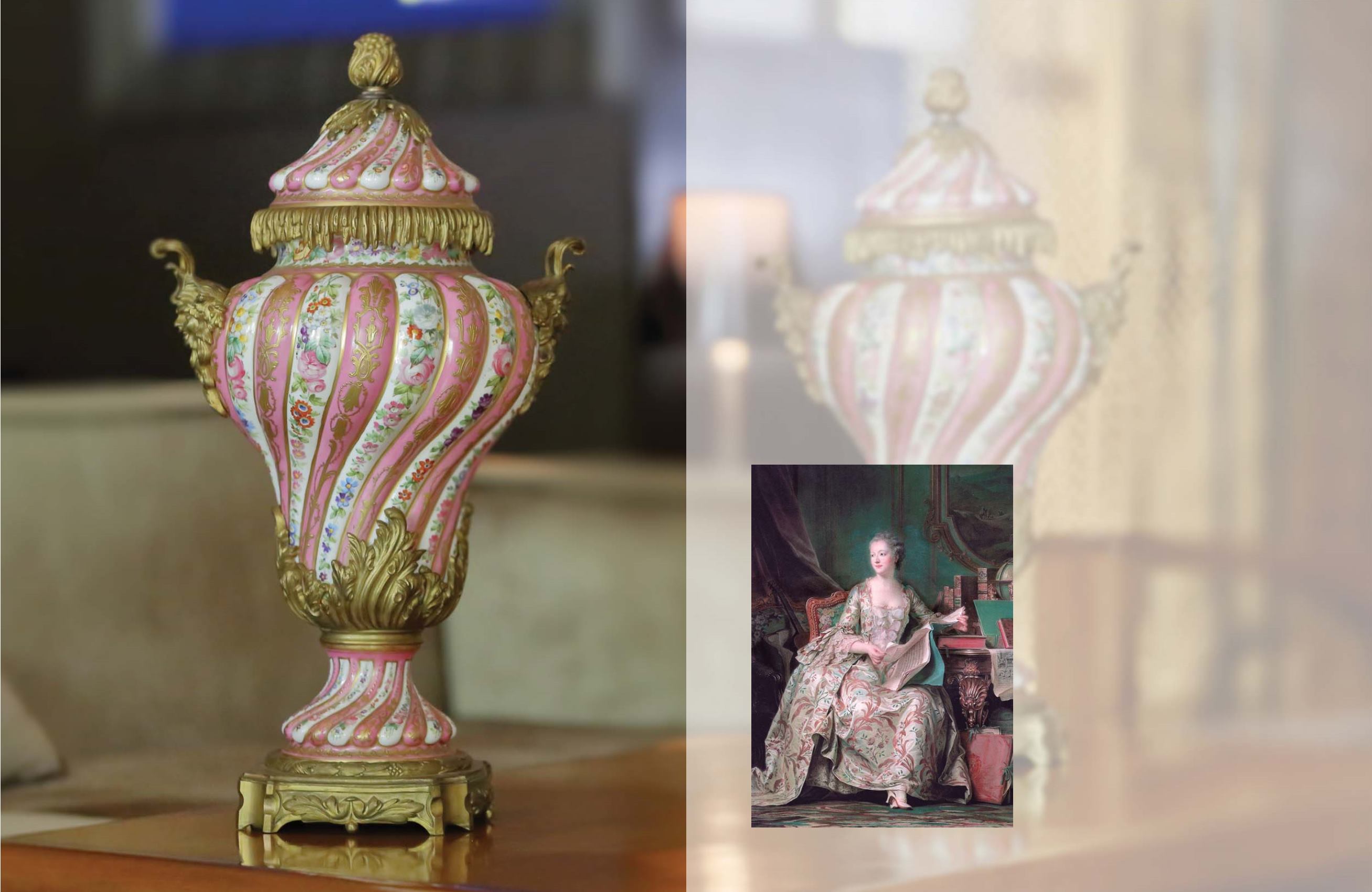

Sèvres porcelain, one of the most luxurious brands
of ceramics, was a favourite among European royalty,
aristocracy and collectors of the 19th and 20th centuries.
Originally founded at Chateau de Vincennes, France, in
1738, it relocated to Sèvres in 1756 under the direction
of Madame de
Pompadour.Itwas the official porcelain
manufacturer to the crown, and Louis XV, the king of
France, became its sole owner three years later.Under his
and Madame de Pompadour's patronage, it became the
preeminent porcelain company in Europe in the second
half of the 18th century.
Over time, Sèvres produced both soft-paste and hard-
paste porcelain, with exquisite designs and
decorations.Italso introduced the delicate "biscuit porcelain," a natural-
toned, unglazed form of porcelain, often moulded as
sculptures portraying scenes from classic mythologies or
pastoral life.Sèvres was known for producing dinner sets
and coffee and tea services, extravagant vases decorated
with exotic flowers and birds on brilliantly coloured
SÈVRES PORCELAIN
(Lots 11‒12)
Maurice Quentin de La Tour,
Full-length portrait of the Marquise de Pompadour
,
circa 1748-1755
Source: Maurice Quentin de La Tour [Public domain], via Wikimedia Commons
backgrounds, embellished with fine detail of curls, scrolls,
and trellis patterns in gold.
"The range of Sèvres creations is extensive, varying in
shape, historical styles, motifs, and ornamentation.
Vases typically feature double round, oval, or elliptical
finely painted scenes edged in white, against pastel
backgrounds.One side portrays figures, while the
other features flower bouquets. Their lavish gilding, a
royal touch reserved especially for Sèvres creations, is
often embellished with engraved detail, like flowers or
geometric motifs."((Melody Amsel-Arieli, "How Sèvres
survived the French Revolution and why it's so hard to
avoid fakes and pastiches," Antique Trader, 10 August
2011, online)The company also developed unique
colours such as the rose Pompadour, created by chemist
Jean Hellot and characterised by its rose-pink ground
colour, and bleu de roi, a cobalt-blue enamel.
During the French Revolution (1789-1799), the company
suffered financial setbacks and it was no longer a
royal enterprise.With the appointment of Alexandre
Brongniart (1770-1847) as its director in the beginning
of the 19th century, and later Napolean Bonaparte, the
industry revived."Sèvres porcelain regained its former
glory under Napoleon Bonaparte, who assumed power
in 1804. He promoted elaborately ornamented pieces in
the classical style.The Empire's richly decorated, themed
dinner sets, for example, were enjoyed by distinguished
guests, visiting rulers, and Napoleon himself.. These pieces
typically feature florals, landscapes, or cameo portraits,
framed by solid gold edging accented with stylized palm
fronds, the ancient Greek symbol of victory." (Amsel-
Arieli, online)
As of today, Sèvres produces both traditional and
contemporary porcelain on commission, and continues
to hold a prestigious place in the porcelain industry.
18
19


















